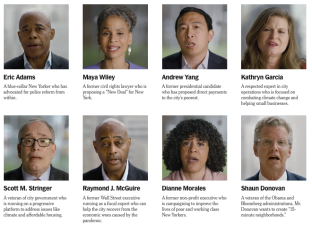“My Other Car Is a Bright Green City”

As attention turns to the next federal transportation bill, and livable streets fans scan the platforms of presidential candidates for glimpses of what to expect from Washington over the next four years, Alex Steffen, editor and CEO of the blog WorldChanging, has posted an essay-in-progress called "My Other Car is a Bright Green City." Steffen says that reining in fuel standards and auto emissions, for instance, is not nearly as important to present and future generations as developing communities that behave more like cities, which are, by environmental measures, much cleaner than commute-intensive suburbs and exurbs. Here are some excerpts.
Our vehicle emissions are a major climate change contributor, but what comes out of the tailpipe is only a fraction of the total climate impact of driving a car, and the climate impact is in turn only a part of the environmental and social damage cars cause. Improving mileage will not fix these problems.
We can’t see most of the ecological and social impacts of our auto-dependence in our daily lives. And those impacts are so massive that arguing about fuel efficiency standards (especially in terms of gradual increases) fails to acknowledge what we’re up against with this crisis.
All that driving takes some pretty big social tolls, too, of course. Car accidents are a leading cause of death and disabling injury in the U.S. Auto-dependence is a major contributor to obesity and other chronic illness. In addition, more and more people are finding themselves driving longer commutes: more than 3.5 million Americans now drive more than three hours a day to get to and from work, spending a month of their lives on the road each year. Meanwhile, people who live in the newer fringe-burbs are reportedly the least happiest of Americans, and the long commutes they endure are a major reason why.
We know that density reduces driving. We know that we’re capable of building really dense new neighborhoods and even of using good design, infill development and infrastructure investments to transform existing medium-low density neighborhoods into walkable compact communities. It is within our power to build whole metropolitan regions where the vast majority of residents live in communities that eliminate the need for daily driving, and make it possible for many people to live without private cars altogether.
The personal happiness index is not lost on those in Paris and Bogotá, where reclaiming public space from the automobile has worked wonders, as enRoute reports:
The charge is being led by some of the world’s toughest towns, places like Bogotá, where happiness theory led one mayor to transform roads into parks and pedestrian "freeways," and Mexico City, whose mayor is investing in urban beaches and bikeways in order to change the citizens’ gloomy outlook. Now the movement is spilling over to wealthier cities too. Seoul has ripped out a downtown freeway to make room for parks and streams. London has put the squeeze on cars with its now famous congestion charge.
These measures are often sold as emergency actions to tackle global warming. In fact, changing the way we design and use public space can change the way we move, the way we treat other people and ultimately the way we feel. Now you might think that Paris had long ago figured out the art of urban joy. But in recent years, residents have become so sick of noise, pollution and congestion that they have thrown their support behind a radical plan by Mayor Bertrand Delanoë to reclaim their streets. By 2012, suburban cars will be banned entirely from the city’s core.
So when can Americans expect Congressional happiness hearings?
Image: enRoute
